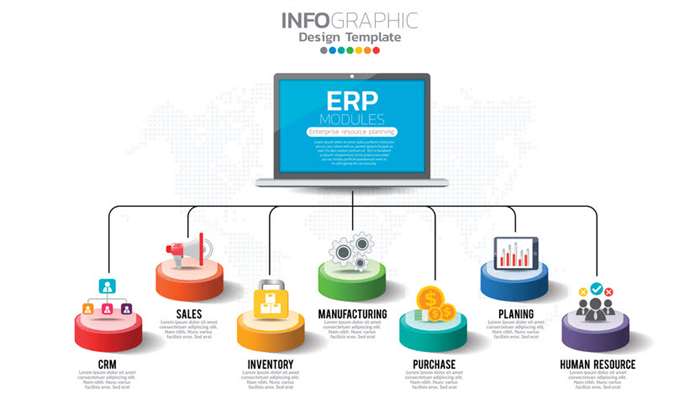It is a graphical representation for getting all the possible solutions to a problem/decision based on given conditions. Suppose that the subjects are to be classified as heart-attack prone or non heart-attack prone on the basis of age, weight, and exrecise activity. Same variable can be reused in different parts of a tree, i.e. context dependency automatically recognized. Specified class in that leaf to the total number of pixels in the leaf. There is no algorithm or strict guidance for selection of test relevant aspects.
TMS-EEG perturbation biomarkers for Alzheimer’s disease patients … – Nature.com
TMS-EEG perturbation biomarkers for Alzheimer’s disease patients ….
Posted: Thu, 11 May 2023 11:46:47 GMT [source]
Sometimes, such a selection can be spurious and can also mask more important predictors that have fewer levels, such as categorical predictors. That is, the predictor-selection process at each node is biased. Also, standard CART tends to miss the important interactions between pairs of predictors and the response. Resubstitution error is the difference between the response training data and the predictions the tree makes of the response based on the input training data. If the resubstitution error is high, you cannot expect the predictions of the tree to be good. However, having low resubstitution error does not guarantee good predictions for new data.
Assumptions of Decision Tree:
Repeat until we run out of all attributes, or the decision tree has all leaf nodes. Building a decision tree involves construction, in which you select the attributes and conditions that will produce the tree. Then, the tree is pruned to remove irrelevant branches that could inhibit accuracy. Pruning involves spotting outliers, data points far outside the norm, that could throw off the calculations by giving too much weight to rare occurrences in the data. A new method is developed for performing sufficient dimension reduction when probabilistic graphical models are being used to estimate parameters. The methodology is developed for the case of the sliced inverse regression model, but extensions to other dimension reduction techniques such as sliced average variance estimation or other methods are straightforward.
Rather than using a tabular format we can instead use a coverage target to communicate the test cases we intend to run. We do this by adding a small note to our Classification Tree, within which we can write anything we like, just as long as it succinctly communicates our target coverage. Sometimes just a word will do, other times a more lengthy explanation is required. As we draw a Classification Tree it can feel rewarding to watch the layers and detail grow, but by the time we come to specify our test cases we are often looking for any excuse to prune back our earlier work.
CTE XL
In the bagging technique, a data set is divided intoNsamples using randomized sampling. Then, using a single learning algorithm a model is built on all samples. Later, the resultant predictions are combined using voting or averaging in parallel. The goal of using a Decision Tree is to create a training model that can use to predict the class or value of the target variable bylearning simple decision rulesinferred from prior data. Decision Tree algorithm belongs to the family of supervised learning algorithms.
- Li C, Gluer CC, Eastell R, Felsenberg D, Reid DM, Rox DM, Lu Y. Tree-structured subgroup analysis of receiver operating characteristic curves for diagnostic tests.
- A decision tree can also decide the overall promotional strategy of faculties present in the universities.
- In the above diagram, the ‘Age’ attribute in the left-hand side of the tree has been pruned as it has more importance on the right-hand side of the tree, hence removing overfitting.
- It is shown that OofA-OAs are superior over any other type of fractional OofA designs for the predominant pair-wise ordering model.
We will take onlyAgeandEstimatedSalaryas our independent variablesXbecause of other features likeGenderandUser IDare irrelevant and have no effect on the purchasing capacity of a person. C4.5, an improvement of ID3, uses Gain ratio which is a modification of Information gain that reduces its bias and is usually the best option. Gain ratio overcomes the problem with information gain by taking into account the number of branches that would result before making the split. It corrects information gain by taking the intrinsic information of a split into account. Where “before” is the dataset before the split, K is the number of subsets generated by the split, and is subset j after the split.
Unbiased recursive partitioning: a conditional inference framework
Impurity can be measured using metrics like the Gini index or entropy for classification and Mean squared error, Mean Absolute Error, friedman_mse, or Half Poisson deviance for regression. In Figure 12, notice that we have included two concrete values into each cell beneath the Cost Code branch – one for the Project Code input and one for the Task Code input. This is because when we drew our tree we made the decision to summarise all Cost Code information into a single branch – a level of abstraction higher than the physical inputs on the screen. Now we have made the switch to concrete test cases, we no longer have the luxury of stating that any existing code combination will do. We must provide exact test data for each input and adding multiple values to a cell is one way to accomplish this goal.

Create cross-validated classification trees for the ionosphere data. Specify to grow each tree using a minimum leaf size in leafs. The dataset is normal in nature and further preprocessing of the attributes https://globalcloudteam.com/ is not required. So, we will directly jump into splitting the data for training and testing. Reduction in variance is used when the decision tree works for regression and the output is continuous is nature.
Decision Tree Algorithm
With a little digging we may find that someone has already done the hard work for us, or at the very least provided us with some interesting food for thought. Unfortunately, there is no standard name for what we are looking for. It may be called a class diagram, a domain model, an entity relationship diagram, an information architecture, a data model, or it could just be a scribble on a whiteboard. Regardless of the name, it is the visual appearance that typically catches our attention.

And it deviates if you are golfing with friends or strangers. Exercise Try to invent a new algorithm to construct a decision tree from data using Chi2test. The order-of-addition designs have received significant attention over recent years. It is of great interest to seek for efficient fractional OofA designs especially when the number of components is large. It has been recognized that constructing efficient fractional OofA designs is a challenging work. A systematic construction method for a class of efficient fractional OofA designs, called OofA orthogonal arrays (OofA-OAs), is proposed.
A new classification tree method with interaction detection capability
Writing a book is a lengthy endeavour, with few milestones that produce a warm glow until late into the process. Sharing the occasional chapter provides an often well needed boost. The title is still to be finalised, but the subject is clear; a practical look at popular test case design techniques. The dataset that we have is a supermarket data which can be downloaded fromhere. In the above diagram, the ‘Age’ attribute in the left-hand side of the tree has been pruned as it has more importance on the right-hand side of the tree, hence removing overfitting.

A properly pruned tree will restore generality to the classification process. Prerequisites for applying the classification tree method is the selection of a system under test. The CTM is a black-box testing method and supports any type of system under test. This includes hardware systems, integrated hardware-software systems, plain software systems, including embedded software, user interfaces, operating systems, parsers, and others . The standard CART algorithm tends to select continuous predictors that have many levels.
Introduction
Information gain is used to decide which feature to split on at each step in building the tree. To do so, at each step we should choose the split that results in the purest daughter nodes. For each node of the tree, the information value measures how much information a feature https://globalcloudteam.com/glossary/classification-tree/ gives us about the class. The split with the highest information gain will be taken as the first split and the process will continue until all children nodes are pure, or until the information gain is 0. The process of growing a decision tree is computationally expensive.
